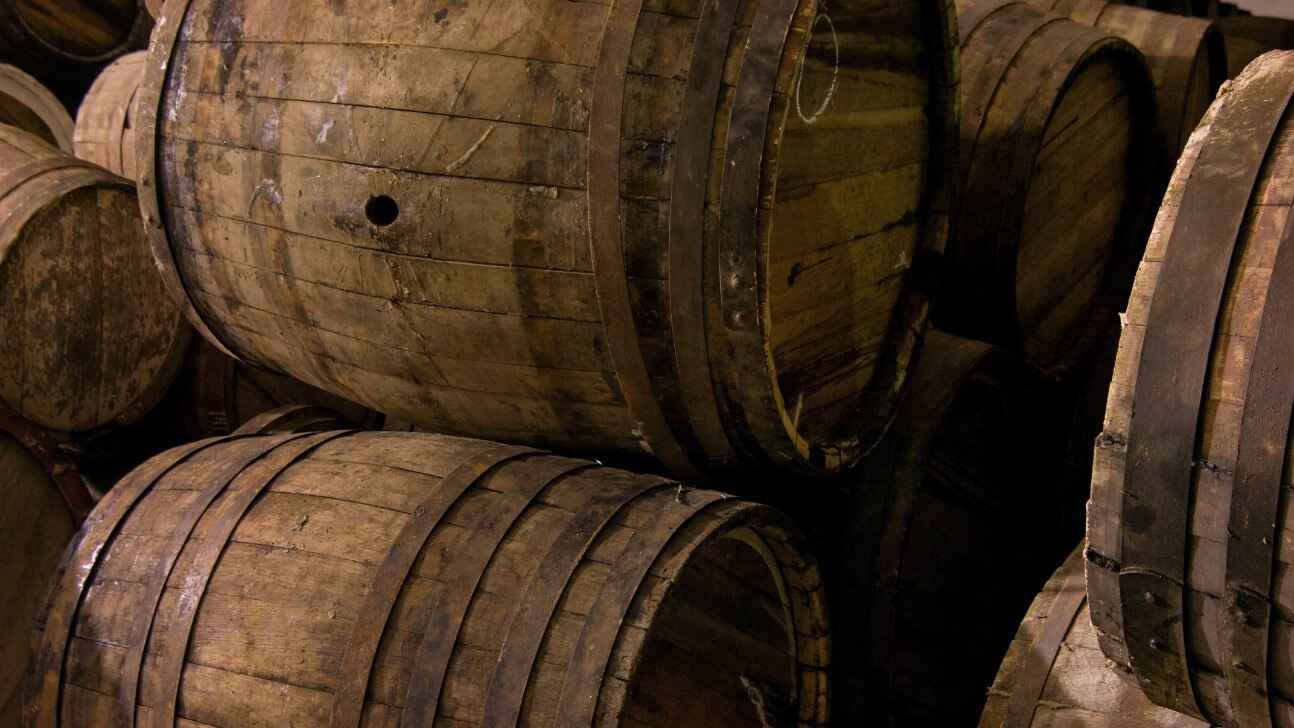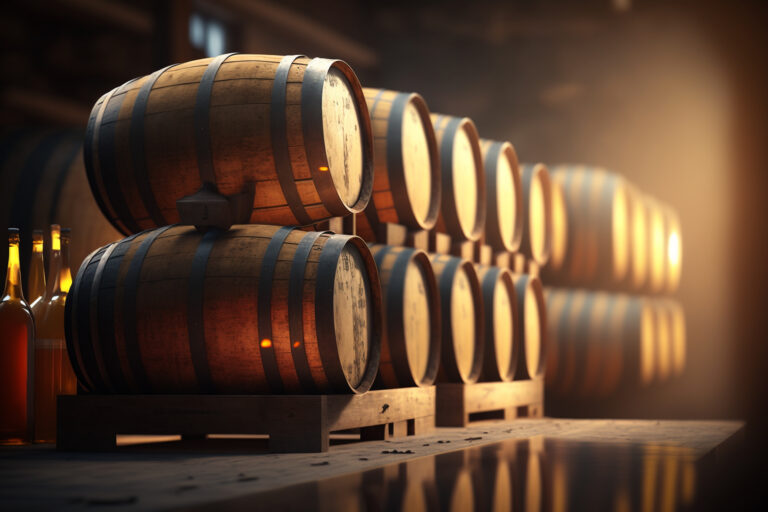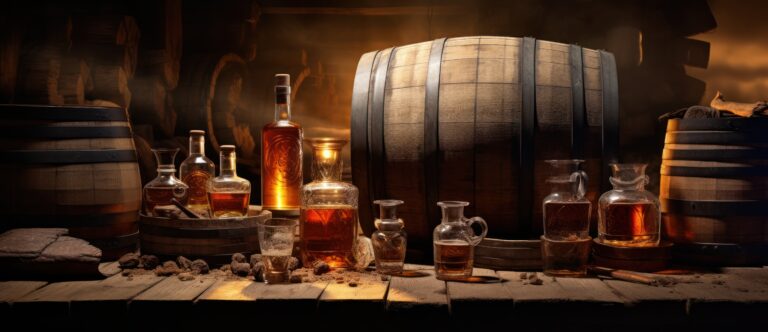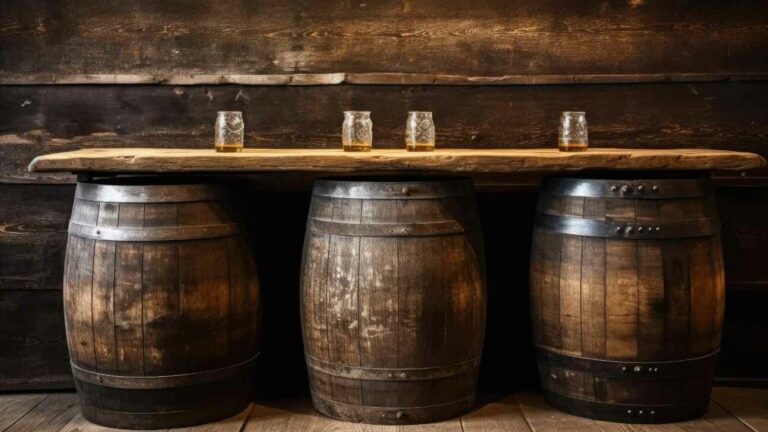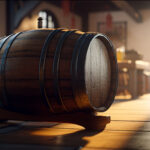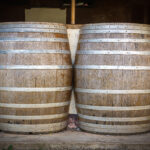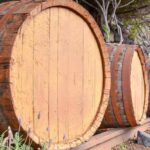So you’ve been hearing a lot about the booming market for used whiskey barrels lately. Maybe you’re curious about what exactly is driving this trend and why people are shelling out big bucks for what seems like an odd collectible. Well, settle in, because we’re going to explore the fascinating world of used whiskey casks and let you in on why they’ve become such a hot commodity. From craft distillers looking to age their spirits to home decor aficionados wanting a rustic accent piece, used barrels are appealing to a wide range of buyers. And with a limited supply and increasing demand, prices for high-quality used casks have skyrocketed. If you’ve ever considered investing in alternative assets, used whiskey barrels might just pique your interest. There’s a lot more going on in this market than meets the eye.
The Growth of the Whiskey Industry Is Fueling Demand for Used Barrels
The whiskey industry has exploded in recent years, fueled in part by the craft distilling movement. As more distilleries pop up, the demand for used whiskey barrels has also skyrocketed.
Why Used Barrels?
Used barrels are integral to the whiskey aging process. As whiskey interacts with the wood, it absorbs the barrel’s flavors and aroma compounds, giving the spirit its distinctive taste and color. However, barrels can only be used a limited number of times before they lose their ability to impart flavor.
Once emptied, used barrels become available on the secondary market. Distillers looking to age new batches of whiskey or small craft distillers eager to get their hands on authentic barrels snap them up. Homebrewers and DIY-ers are also getting in on the action, using the barrels to age cocktails, beers, and homemade wine and cider.
The most sought-after used barrels are those that previously held bourbon, as they tend to produce the most robust flavors. However, barrels that aged tequila, rum, port or sherry are also in demand. Prices for a 53-gallon used barrel range from $100 up to $1000 or more, depending on factors like the type of spirit it held, the barrel’s age and condition, and the scarcity of barrels on the market.
Whether you’re a distiller, homebrewer or simply want an attractive piece of decor, used whiskey barrels are brimming with possibilities. As the craft spirits movement continues to take the world by storm, the market for these charred oak vessels should remain strong for years to come. After all, every great whiskey needs a great barrel.
Where Do Used Whiskey Barrels Come From?
Where do used whiskey barrels come from? Most used whiskey barrels were originally filled with bourbon or other whiskeys to age and develop flavor. Once the distiller has extracted the maximum flavor from the barrels, they are emptied and sold on the secondary market.
Cooperages
Cooperages are barrel makers and repairers. They produce new charred oak barrels to exact specifications for distillers. Some cooperages also handle the rejuvenation and resale of used barrels. Used barrels go through a rigorous reconditioning process before being resold.
Private Sellers
Some private individuals buy used barrels directly from distilleries or cooperages and resell them. You can find used barrels for sale on websites like Craigslist, Facebook Marketplace, and eBay. Be very careful buying from private sellers, as the quality and sanitation of the barrels can vary. Always inspect barrels in person before purchasing if possible.
Retailers
A few retailers specialize in selling used whiskey barrels that have been properly reconditioned. These include Barrel Broker, Barrel House Distillery, and Black Swan Barrels. They source barrels from reputable distilleries and cooperages, then clean, sanitize and refurbish the barrels before offering them for resale. Buying from a reputable used barrel retailer is often the safest option.
While used whiskey barrels require some TLC to bring them back to life, for many the effort is well worth it. Used barrels can provide an authentic, rustic touch and are a sustainable way to repurpose materials. The growing market for used whiskey barrels means more opportunities for distillers to recoup costs and for craft beverage producers to source affordable barrels. Overall, the used barrel market is a win-win for many in the spirits industry.
What Makes a Barrel “Used”?
Once whiskey has aged in charred oak barrels, those barrels are considered “used” and are sold to craft distilleries, breweries, wineries, and restaurants to age and flavor other spirits and beverages.
What Qualifies as “Used”
A barrel is typically considered used after aging one batch of whiskey. Most major distilleries use a barrel only once to age their whiskey before selling it. By law, bourbon whiskey must be aged in a brand new charred oak barrel, so major distilleries cannot reuse them. Smaller craft distilleries, however, are able to reuse barrels to age their spirits.
Once emptied, the used barrels still retain much of the flavors and aromas from the original whiskey. Brewers and winemakers often purchase used bourbon barrels to impart notes of vanilla, caramel, and oak into their craft beers, wines, and ciders. Chefs also use small used barrels to age and enhance the flavor of foods like hot sauces, vinegars, and maple syrup.
A Growing Demand
The demand for used whiskey barrels has skyrocketed along with the craft spirits movement. There are now over 1,500 craft distilleries and more than 7,000 craft breweries in the U.S. and Canada eager to get their hands on used barrels. Major distilleries can sell their once-used barrels for between $75 to $200 each, generating additional revenue.
Some of the most sought after used barrels are those that have aged bourbon whiskey in Kentucky’s humid climate, where the barrels tend to impart more robust flavors into the distillate. The used barrel market has become so popular that some people even make a living “flipping” used barrels by buying and reselling them.
If you’re looking to dabble in barrel-aged drinks or cuisine, you’ll need to get your hands on a used barrel. Check with local distilleries, breweries or wineries to source a small barrel, or purchase one online from sites that specialize in used barrels. However, be prepared to pay a premium due to high demand. A little patience and persistence may yield you a used whiskey barrel to craft your own barrel-aged creation.
Unique Flavors and Aromas From Used Barrels
Once whiskey has been aged in charred oak barrels, the wood imparts unique flavors and aromas to the spirit that contribute to its complex taste. Used barrels that once held bourbon, rye or scotch can impart hints of vanilla, caramel and smoke when the whiskey is transferred to a new barrel.
Vanilla Notes
The vanilla flavor comes from lignin, a compound in oak that breaks down during the charring and aging process. As the whiskey soaks into the wood, it absorbs these vanilla-like flavors. Bourbon and rye typically have strong vanilla notes due to aging in new charred oak barrels. When these barrels are used for scotch or other whiskeys, those same vanilla undertones come through.
Toffee and Caramel
The caramel and toffee-like tastes arise from the breakdown of cellulose and hemicellulose in the wood. These are natural sugars that melt during barrel charring and impart a slight burnt sugar essence. The longer a whiskey ages in the barrel, the more these notes develop. Used barrels that once held an aged bourbon may produce a scotch or Irish whiskey with prominent toffee and caramel flavors.
Smoky Hints
The smoky characteristic comes from phenol compounds in charred oak wood that the whiskey absorbs during aging. Peat-smoked scotch whiskeys are especially prone to pick up smoky hints when aged in used bourbon barrels. The subtle smokiness blends with the peat to create a complex, layered flavor.
Used barrels provide an economical and sustainable way for distillers to enhance the flavor of their whiskeys. The variety of tones from different barrel types allows innovative distillers to create truly unique and memorable tasting experiences for whiskey connoisseurs. Exploring the secondary market for used whiskey barrels reveals a whole new world of flavor for both established and up-and-coming craft distilleries.
Uses for Repurposed Whiskey Barrels Beyond Aging Spirits
Once whiskey has aged in barrels, the wood can be repurposed for various uses. The barrels are made of white oak, which imparts flavor to the whiskey during aging and is also durable and water resistant.
Furniture
Reclaimed whiskey barrels are popular for making rustic furniture like tables, chairs, stools, and benches. The wood has beautiful grain and color from years of use, and the hardware like metal hoops add character. Barrel furniture is ideal for patios, game rooms, and cabins.
Planters
Whiskey barrels make attractive planters for small trees, shrubs, flowers, and herbs. The barrels will last for many years outdoors and the metal hoops provide drainage. For indoor use, you can create self-watering planters by adding a reservoir beneath the barrel.
Decor
There are many ways to use reclaimed barrels as decor in homes and businesses. Barrels can be cut in half horizontally or vertically to make wall planters, storage bins, sinks, and containers. You can also transform full barrels into side tables, ottomans, or entryway organizers. The rustic wood and metal details create an charming focal point.
Garden Accessories
In addition to planters, whiskey barrels have several uses in gardens and yards. They make excellent compost bins, rain barrels to collect water, and containers for yard tools and supplies. You can even turn a barrel into a fire pit or smoker. The possibilities are endless for DIY garden projects.
Flooring
The planks from used whiskey barrels can be milled into rustic flooring. The wood has a distinctive aroma, color, and grain from years of aging spirits. Barrel flooring creates a memorable accent wall or can be used throughout an entire room. It’s ideal for spaces like distilleries, tasting rooms, restaurants, and cabins.
There are many eco-friendly ways to repurpose used whiskey barrels and give the wood a second life. With some creativity, you can make practical and decorative items from this versatile material. The barrels’ natural aging and patina add warmth and character to any space.
Factors Impacting Used Barrel Prices and Availability
The secondary market for used whiskey barrels is booming. As the craft distillery industry has exploded in recent years, the demand for used barrels has skyrocketed. Used barrels are in high demand for aging craft spirits like rum, tequila, and of course, whiskey. Several factors impact the prices and availability of used barrels.
Barrel size and type
The most prized used barrels are typically small barrels, between 5 to 30 gallons in size. These smaller barrels have more surface area, allowing for faster aging. The specific type of barrel also matters, with barrels that previously held bourbon or rye being especially sought after for aging whiskey. Wine and port barrels are popular for aging brandy and rum.
Wood source and char level
Barrels made from American white oak, especially oak from the Ozark mountains, are considered superior. The level of char on the inside of the barrel impacts flavor and aroma compounds that get imparted to the spirit. Lightly charred barrels may be better for rum, while heavily charred barrels are ideal for bourbon.
Age and condition
Older, well-seasoned barrels that have been used to age spirits for at least 4 to 6 years tend to fetch higher prices. Barrels in good structural condition without any leaks or damage also command a premium. Some distillers prefer barrels that still have some of the previous spirit absorbed into the wood, believing it enhances the flavor of the new spirit.
Availability
The supply of high-quality used barrels ebbs and flows based on the production of major distillers. Periods when large distillers are releasing more used barrels onto the market tend to see lower prices. Conversely, when fewer used barrels are being sold, prices climb due to increased competition. Some distillers are willing to pay top dollar to get the specific type and quality of used barrels they want.
Whether you’re a craft distiller looking to source used barrels or an investor speculating on this growing commodity market, understanding these factors can help determine great deals and smart buys. The used whiskey barrel market shows no signs of slowing down anytime soon.
Navigating the Secondary Market for Used Barrels
The secondary market for used whiskey barrels has exploded in recent years. As the demand for aged spirits has skyrocketed, distillers have turned to used casks to speed up production and meet demand. For you, this means an opportunity to procure a barrel with a proven track record of producing quality spirits.
Finding Sources
You’ll find used barrels from a variety of sources. Major distillers like Jim Beam and Jack Daniels sell used casks that previously held their flagship brands. Smaller craft distillers also part with barrels to generate revenue. In addition, some brokers specialize in sourcing and reselling used casks from distilleries around the world. Do some research on the source and their distilling practices to determine barrel quality.
Considering the Spirit
Think about what kind of spirit you want to age – bourbon, rum, tequila, etc. Match the barrel to the appropriate spirit. Bourbon barrels for bourbon, rum barrels for rum, and so on. The barrel will impart distinctive flavors and aromas from the original spirit that are ideal for that type of liquor. For more neutral results, you can use toasted or charred oak barrels.
Inspecting the Barrel
Once you find some promising candidates, thoroughly inspect each barrel before purchasing. Check that the barrel is swollen tight with no leaks or cracks, with intact hoops and staves. Give the inside a sniff – you want a clean, woody aroma without musty or stale odors. Tap along the surface to ensure an even, resonant sound without dull thuds. Darker, more weathered barrels tend to produce better results.
Sealing and Aging
After purchasing and filling your used barrel, seal it properly to begin the aging process. Keep the bunghole stoppered and the barrel in a cool, humid location away from direct light. Sample and check on your spirit periodically as it ages to achieve your desired flavor profile. With care and patience, you’ll be enjoying a fine, aged spirit from your used barrel in no time!
Tips for Procuring High-Quality Used Barrels
Procuring high-quality used whiskey barrels requires some insider knowledge. Here are a few tips to help you navigate the secondary barrel market:
Buy from reputable sources
Purchase barrels from established brokers or distilleries with a proven track record of properly preparing and storing used barrels. Some recommended sources include Kelvin Cooperage, The Barrel Broker, and Bluegrass Barrels. Avoid random private sellers on websites like Craigslist or Facebook Marketplace.
Inspect the barrel carefully
Once you find barrels from a trusted source, thoroughly inspect them in person if possible. Check that the barrel staves and metal hoops are intact and secure. Look for any signs of leakage or damage. Give the barrel a few strong rolls to ensure it’s still watertight. Ask about the barrel’s age, origin, and any spirits it was used to age. This information will help determine the barrel’s quality and potential.
Consider char levels and toast types
The level of char or toast applied to the inside of the barrel impacts the flavor it will impart. Barrels with a heavy char tend to produce bold, smoky flavors, while medium or light toasts lead to more subtle spice and oak notes. Ask about the specific char and toast levels to choose a barrel suited to your needs.
Factor in age and previous use
Older, more used barrels typically sell for less but will have less flavoring power than younger barrels. Barrels that aged bourbon, for example, will impart stronger oak and caramel notes than those used for scotch or rum. Choose a barrel based on how much oak and spirit influence you want.
Seal and sterilize properly
Once you purchase a used barrel, seal any leaks and sterilize the inside before using or reselling. Apply barrel wax, silicone, or beeswax to seal gaps between staves. Sterilize the barrel with steam, ozone gas, or a sulfur stick to prevent unwanted bacteria growth before filling it with spirits or wine.
With the right knowledge and precautions, used whiskey barrels can be a great asset. Follow these tips to find high-quality barrels that will suit your unique needs. The time and effort will pay off with a barrel that can produce truly exceptional results.
Used Whiskey Barrels FAQs: Your Top Questions Answered
Used Whiskey Barrels FAQs: Your Top Questions Answered
Have you ever wondered what happens to whiskey barrels after they’re used to age bourbon or scotch? Many find a second life on the secondary market, where they’re bought and sold by individuals and businesses for various uses. Here are some of the most frequently asked questions about used whiskey barrels.
- How are used barrels prepared for sale? Distilleries drain and rinse used barrels, then typically disassemble them into staves and hoops so they can be efficiently shipped. Some buyers reassemble the barrels themselves, while others use the wood for other purposes like crafts or building materials.
- What types of barrels are available? You’ll find used barrels from makers of bourbon (charred new American oak), scotch (primarily ex-bourbon barrels), and other spirits. Barrel sizes range from small 5-10 gallon barrels up to the standard 53-gallon size used by most distillers.
- How much do used whiskey barrels cost? Prices vary widely based on the barrel’s size, type of wood, previous contents, and condition. You can find a small 5-10 gallon barrel for $50-$200 or pay $500-$1000 or more for a 53-gallon barrel. Rare or collectible barrels from notable distilleries may sell for significantly higher amounts.
- How are used barrels used? Many homebrewers and craft distillers buy used barrels to age and flavor spirits like bourbon, rum, or beer. Barrels are also popular for home decor, planters, and craft projects. Some people even make barrel furniture, tables, or bar tops from used staves and hoops.
- Where can I buy used whiskey barrels? Used barrels can be found from private sellers on websites like Craigslist, Facebook Marketplace, and eBay. Many homebrew supply stores also sell used barrels, as do some distilleries and brokers who specialize in sourcing and reselling used barrels.
Whether you’re looking to age your own spirits, craft a unique piece of decor, or tap into the burgeoning market for barrel-aged goods, used whiskey barrels have lots of potential waiting to be unlocked. And with so many available, you’re sure to find one that suits your needs and budget. What will you create with a secondhand slice of bourbon history?
Final Thoughts
So there you have it, a glimpse into the thriving secondary market for used whiskey barrels. As the demand for aged spirits continues to grow, distilleries are ramping up production and used barrels are becoming more readily available. This means more opportunities for you to get your hands on a barrel and experiment with aging cocktails, brewing beer, or starting your own mini barrel-aged whiskey project. Used barrels allow you to tap into an age-old process and create something unique to share with friends. The next time you’re sipping an old fashioned, boulevardier or other barrel-aged cocktail at your favorite bar, you’ll have a newfound appreciation for the integral role used whiskey barrels play in creating these complex and delicious spirits. Who knows, maybe it will even inspire you to start aging your own spirits at home. The opportunities are endless for those willing to take a chance on used whiskey barrels.
